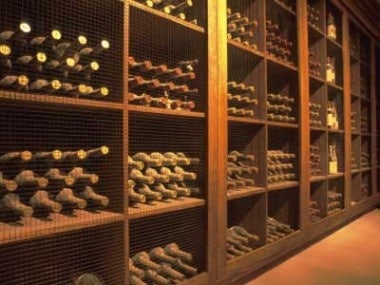Part Two of Jing Daily columnist Torsten Stocker's series on the wine industry in China. If you missed Part One, which covered the main factors that will shape China's wine industry in the years ahead, check it out
here#
.

Fast-Forward to 2020 - Potential Scenarios for China’s Wine Industry#
Based on the factors outlined in my last column, and of course also shaped by the general direction of the global and Chinese macro-economic environments, several potential scenarios are possible for the future of China’s wine industry. As previously stated, these scenarios are not predictions, but are rather alternative views on how the future of China's wine industry might evolve, and what implications these different paths might have for the industry as a whole.
Scenario #1: Wine for the Chinese Masses#
This is a world in which Chinese consumers drink grape wine on many occasions and, while it is still somewhat special, it is no longer considered exclusive. In other words, it has, for the most part, lost its mystique and is just another alcoholic beverage, alongside beer, baijiu and others.
Large Chinese and select global players will blend low-value bulk wine and sell it like Consumer Packaged Goods (CPG) brands. Not all of these players will come from a wine background, but, by leveraging their strong brand position and extensive distribution network, select large CPG companies may emerge as new leaders in the wine market. Some high-end and mid-range niche products will remain successful, although much of this will have to do with marketing acumen. Large grocery chains, as well as a handful of wine retail chains, will dominate the business, selling Chinese and global brands alongside their own private label offerings.
- In this scenario, key success factors for wine companies are the
ability to build and carefully manage fine-tuned brand portfolios and achieve scale#
for industrial production and marketing.
Driving distribution channels to expand rapidly#
while
continuing to educate consumers#
to increase wine consumption will be equally important.
Scenario #2: Wine as a (Sizeable) Niche Product in China#

This scenario reflects a world in which many middle-class Chinese consumers drink wine every now and then, and enjoy it when they do, but few really understand it well, or care much about it. Wine is available in most sales channels, both on-trade and off-trade, and some specialist retailers have emerged, but no clear channel format or retailer dominates.
At the same time, there are a number of wine enthusiasts in each city throughout China, and for them, country of origin and vintages are important differentiators. French wines will continue to command a premium, but are no longer as dominant, as wine enthusiasts learn about wines from other countries and start to appreciate them. Wine clubs emerge as important education and distribution channels for these enthusiast consumers, as they prefer to buy their wine from people whose judgment they trust. Some enthusiasts continue to engage in wine collecting and auctions and look at it as a serious investment.
- In this scenario, key success factors for wine companies will include
the ability to serve the more slowly growing mass market with a range of attractive brands#
(i.e., attractive from a consumer and profitability perspective).
- At the same time,
success in serving the "wine enthusiast" market will require forward integration into distribution#
(e.g., partly by establishing namesake wine clubs and charging membership fees while ensuring quality supply and education in return).
Scenario # 3: Another Successful Export from China#

This scenario differs from the first two in that the focus is not only on the domestic market, but envisions China playing a much bigger role in the global wine market, applying its production and export capabilities to wine. In this world, China becomes a major wine-producing country, in part because traditional wine growing regions in France and Italy -- due to unpredictable weather patterns -- can no longer consistently produce quality wine, so leading wine makers build vineyards in new regions such as China.
In the meantime, demand for wine surges as new research reveals that drinking wine on a daily basis prevents chronic diseases and cancer. Innovation in reading wine labels allows consumers to get wine information such as vintage, quality and even average sales price (ASP). In this transparent wine market, Chinese wine competes on fact, rather than on reputation, and it becomes popular. Its low price, good quality and local production by "celebrity" wine producers strongly appeal to new wine drinkers.
- A key success factor here includes the ability to
create a portfolio of consistent wine brands#
that appeal to consumers around the world, and
understand the distribution and retail challenges#
and peculiarities of each market.
Driving adoption by "new-to-wine" consumers in other emerging markets#
will be an equally important skill.
Torsten Stocker is a partner and co-head of the Asian Consumer Goods Practice at Monitor Group, the US strategy consulting firm. He is based in China.